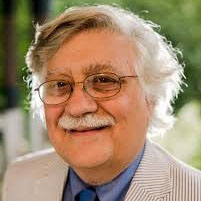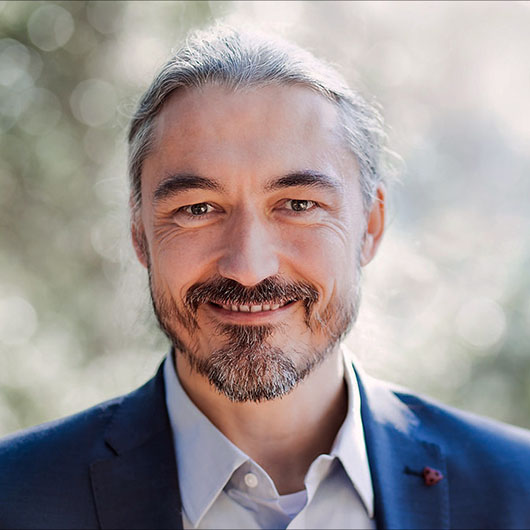
In the spring of 2020, the pandemic catapulted many of us into shock and fear — our lives upended, our routines unmoored. Great uncertainty at the onset evolved into hope that, a year later, a semblance of normalcy might return. Yet not only do people continue to face uncertainty, but many of us have also reached a plateau of fatigue, resignation, and grief.
We are living through a time of widespread illness, social and political unrest, economic fractures, and broken safety nets. Whether each of us experiences the ravages of this time close to home or as part of a larger circle, the symptoms of collective trauma are widespread. Many of these symptoms — feeling overwhelmed, anxious, fatigued — may be familiar. One deserves special mention: numbness. As a psychiatrist who has considerable experience treating refugees suffering from trauma, and an author and teacher who works with collective trauma, we have learned a great deal about how numbness affects us all.
Newsfeeds: Friend or foe?
Compounding our challenges are our news viewing habits. During times of uncertainty, we are each, in our own way, experiencing vulnerability. Fears that had lain dormant for years may be activated, causing low-grade stress or full-blown anxiety. These fears are exacerbated by what might be called the “toxic trauma story” churned out by mainstream news channels.
The formula is simple: brutal facts associated with high emotion attract viewers. As the old adage says, “If it bleeds, it leads.” Negative news around vaccine reactions or political unrest provides the ultimate sensational content for viewers. But for most Americans, this daily onslaught of negativity exerts a toll on mind, body, and emotions.
Numbness is one possible response to trauma
When a situation is overwhelming, your body protects itself by entering a “fight, flight, or freeze” mode. Our responses to the pandemic and continuous uncertainty, fueled by doomscrolling and newsfeeds, range from hyperactivation (fight or flight) to numbness (freeze). While the three Fs refer to the body’s stress response in the moment, these reactions can continue long after exposure to trauma.
In medical terms, numbness occurs when nerves are damaged, leading to partial or total loss of sensation in the body. We can also describe numbness related to our psychological well-being: a lack of enthusiasm and interest in life, a sense of apathy and indifference. The spectrum ranges from mild apathy to disassociation to a heavy, weighty lethargy, which is often a symptom of severe depression. “Freeze” refers to a paralyzed or frozen state associated with post-traumatic stress disorder (PTSD) and major depression. We have each worked with thousands of people — some refugees, some not — who have experienced this level of trauma.
The numbness many people are experiencing and describing these days didn’t necessarily begin with the pandemic, nor is a toxic stream of trauma stories the only source feeding it. It may have been there for many years, only to be triggered by recent personal and societal challenges.
This numbness is not just a lack of feeling; its symptoms vary. You might feel a low level of anxiety operating in the background, much like an operating system running our computers silently. You may feel no emotion or a sense of frozenness during the day, followed at night by insomnia or nightmares. Some people who are refugees cannot watch the daily news, since it is a terrifying trigger that floods them with memories of their past traumas.
How does numbness affect us collectively?
Millions of people turn to their phones and devices for daily notifications of traumatic news. These instantaneous alerts offer little space for digestion and reflection. That harmful combination of speed and trauma can strike at our nervous systems, overwhelming us until we are too numb to comprehend the complex range of experiences flooding in over the last days, weeks, and years. What happens to us as a culture, grappling with this cumulative phenomenon?
Where collective trauma now exists, we need to seek ways to facilitate dialogue and restoration. The numbness following traumatization reduces our capacity to witness suffering. We lose our reflective capacity to be self-aware, which reduces empathy and compassion. Indifference and disconnection can contribute to further atrocities, fueling a feedback loop that makes new traumas more likely to occur.
Collective numbness can surface as epidemic substance misuse; food, sex, or entertainment addiction; media overuse; or in other ways. It reveals itself as a collective shutting-down to crisis, which can derail healing.
How can you counter numbness and feeling overwhelmed?
As individuals, we can spend more time practicing self-care, as outlined in the Harvard Program in Refugee Trauma toolkit. For example, take time to reflect on the resources and sources of support you have in your life. Spend quality time with family, and if possible, in nature. Set boundaries on news devices to give your nervous system a chance to relax. Turn off your notifications, leave your phone far from your bedroom at night, and consider periodic news fasts to give your system a full recharge.
Developing a mindfulness practice can help reduce stress, allowing people to digest and integrate hidden emotions or experiences buried under numbness. One option is a practice called 3-sync: imagine a journey of witnessing yourself, moving deliberately as you notice the state of your body first, then your mind, and finally, your emotions. Following this during meditation can help you become aware of imbalances within yourself, as well as areas of strength and vitality. Another practice, global social witnessing, is a conscious process of witnessing the news, and digesting it with our minds, bodies, and emotions fully present.
By working together to be with whatever is present, acknowledging and feeling our discomfort, resistance, and pain, we may move closer to integration and a sense of healing during this time of upheaval.
About the Authors

Richard F. Mollica, MD, Contributor
Dr. Richard F. Mollica is a professor of psychiatry at Harvard Medical School, and director of the Harvard Program in Refugee Trauma (HPRT) at Massachusetts General Hospital. A pioneer in international research on refugee trauma, he … See Full Bio View all posts by Richard F. Mollica, MD 
Thomas Hübl, Guest Contributor
Thomas Hübl is a renowned teacher, and author of Healing Collective Trauma: A Process for Integrating Our Intergenerational and Cultural Wounds. Since 2002, he has led dialogue and restoration processes around collective trauma with more than … See Full Bio View all posts by Thomas Hübl